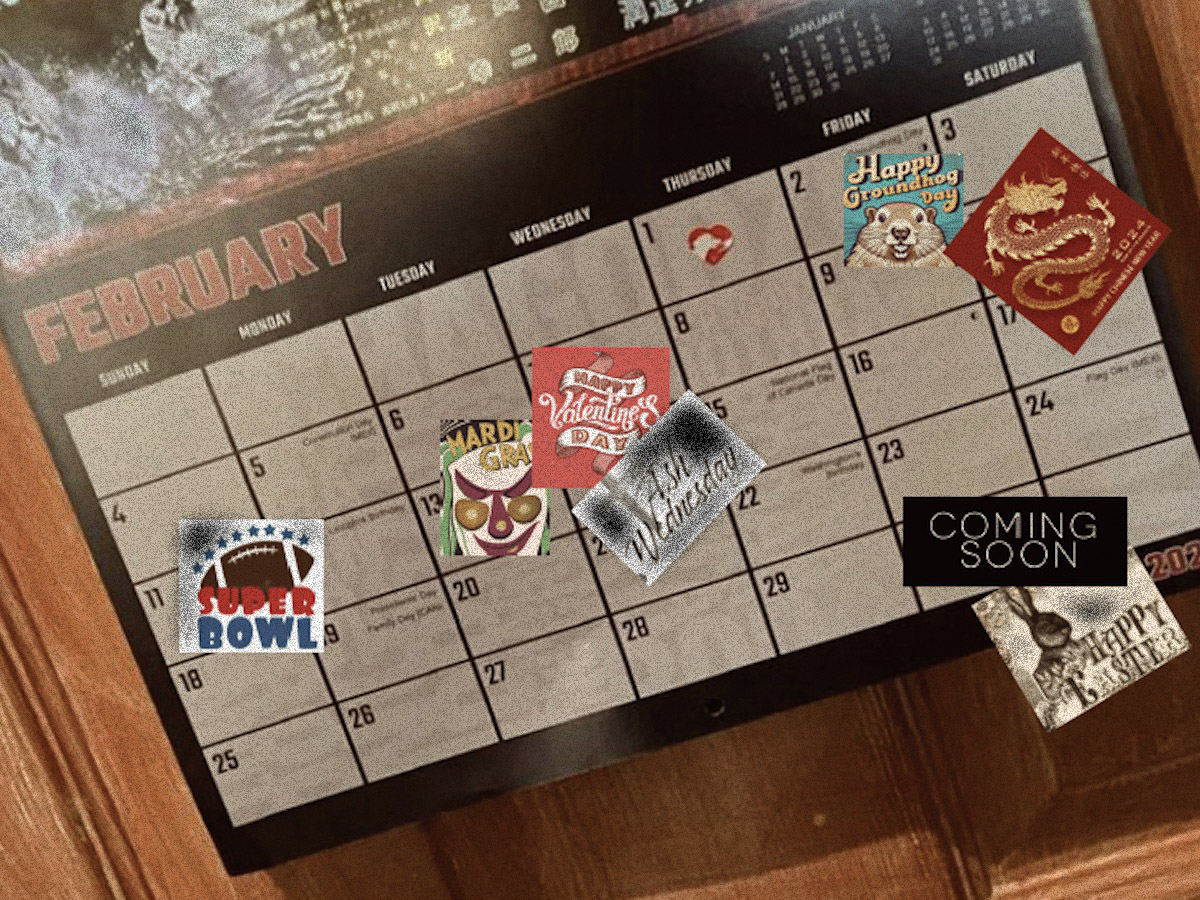We are just a little more than halfway through February, and this week we have seen everything from Lunar New Year to Mardi Gras to Valentine’s Day… and are already in the midst of hurling our way to Easter.
I’m not even going to include Super Bowl Sunday. I don’t consider that a holiday, but it does come with an excessive amount of snacking.
Every few years, when Easter Sunday lands on March 31, we get what I like to call a “squishy year” when a bunch of holidays or observances get smashed together.
As weird as it is to enter into April with pretty much most of the well-known Spring celebrations already over, it is a fun way to explain the coolness of how calendars work.
Here is how a “Squishy Year” works:
First, Easter has to hit at the end of March. Unlike having a designated day like Halloween or Christmas, Easter is always changing. It can hit as early as March 22 and as late as April 25. If you’re a math lover, the Royal Museums Greenwich has a whole algorithm you can work out to see how to determine when it will be. For people like me who prefer playing with words over numbers, the very simplest and slightly inaccurate way to talk about this is to say Easter Sunday is the first Sunday after the first full moon after the Spring Equinox.
This method started in the 8th century… and then the Gregorian Calendar came in the 1500s and we started having to factor in all those dates from the assumed equinox on March 21 to even a Leap Year.
Long story short, sometimes Easter will be in March. It’s March 31 this year, to be exact. It will be even earlier in 2027, but let us not get ahead of ourselves.
Oh, and if you really want to get complicated, this is the date of the Western Christian church Easter. The Eastern churches can have their Easter on another date even up to three or four weeks later. It is set for May 5 this year, by the way, which means their first day of Lent begins on March 18… the day after St. Patrick’s Day this year.

Of course, with the date of Easter comes the beginning of the Lenten season for those who practice, and that is always 40 days before Easter. And this year it happened to be on Valentine’s Day.
Of course, you can’t move Valentine’s Day around, because it has a set date. It is the official Feast Day of the martyred St. Valentine. Historians tend to have differing origins of this, but basically, it was named for third-century bishop Valentinus of Terni in Italy. He was beheaded for, among other things, trying to convert pagans to Christians, and this may have included performing Christian marriages for followers in private. The date for his feast day (the day he was tortured) was picked by a Pope in 496 AD. There was a pagan observance on the 15th, but it had nothing to do with this. It also has nothing to do with romance.
The likely reason it is considered romantic probably started 1,000 years later when Chaucer mentioned it in his Parlement of Foules where birds mated on this particular feast day. Next thing you know, rich people sent each other love notes during bird mating season. Jump ahead centuries and we’re still sending pink teddy bears and heart-shaped candy.
Confused enough? Let’s go back to Lent. The first day is Ash Wednesday (which we know landed on St. Valentine’s Day this year), and the day before that is Fat Tuesday… Mardi Gras… always the party-hard celebration the day before Ash Wednesday.
But that’s not all. This year, Saturday, February 10 was the start of 2024 as the Year of the Dragon. In the Chinese zodiac, no matter what your year is, the Year of the Dragon is always a special one bringing good fortune. The Lunar New Year has been commercialized enough outside of Asian countries, so people are pretty familiar with the 12 animals, but why does the date jump around? Just like Easter, it relies on the phases of the moon. Yet, according to those fun folks at Royal Museums Greenwich again, it also relies on the Earth’s orbit around the sun. As such, the Chinese calendar is considered a “lunisolar” one.
In China, the traditional calendar is used for things like religious or agricultural practices. They also use the Gregorian calendar to adhere to modern administrative and commercial needs. In the traditional calendar, which has 354 days a year, there aren’t continuous “infinite” numbers, but rather a cycle that repeats itself every 60 years. The current cycle we’re in began in 1984 on February 2. The Lunar New Year is always the first day of the first lunar month in the traditional calendar and this year that fell on February 10.
I would mention the Jewish observance of Passover, but it doesn’t come this year until April 22, well out of the squishy time.
Same for the Islamic observance of Ramadan. It isn’t until March 11, a little closer to squishy time, but still out of it.
There you go! This is why all these dates were squished together into one week for a full week of partying, romance, and overeating, followed by some 40 days of “downtime.”
It doesn’t matter what you celebrate or what your beliefs are, calendars and the dates we set by them are actually pretty fascinating.
Hope whatever your “Squishy Year” brings from here on out is wonderful.




